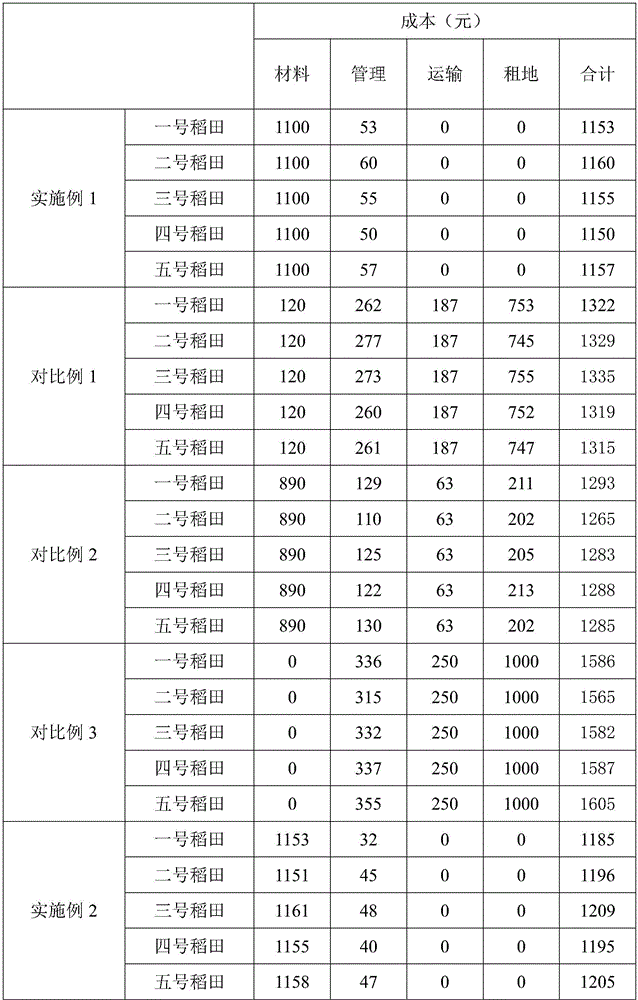Method for simultaneously producing rice grains and ctenopharyngodon idellus
A grass carp and rice technology, applied in botany equipment and methods, fish farming, rice cultivation, etc., can solve problems affecting fish growth, time-consuming and labor-intensive, land occupation, etc., so as to avoid the increase of rented land prices, simple breeding, cost saving effect
- Summary
- Abstract
- Description
- Claims
- Application Information
AI Technical Summary
Problems solved by technology
Method used
Image
Examples
Embodiment approach
[0039] A, culture dish and culture dish are set in embodiment 1 and embodiment 2; Comparative example 1 only arranges culture dish, does not arrange culture dish; Comparative example 2 only arranges culture dish, does not arrange culture dish; Neither sets in comparative example 3 Petri dish, also does not set Petri dish.
[0040] B. Comparative Example 1, Comparative Example 2, Comparative Example 3 and Example 1 except for the above differences, other methods are the same.
[0041] C, select 25 paddy fields of the same area in the same place, and the natural environment for forming 25 paddy fields is the same, and each embodiment or comparative example selects 5 paddy field tests, that is, each embodiment comparative example includes No. 1 paddy field and No. 2 paddy field , No. 3 paddy field, No. 4 paddy field and No. 5 paddy field, finally harvest rice, salvage grass carp, record relevant data, and analyze the cost of each paddy field. It is required to plant the same ric...
Embodiment 1
[0063] The required cost of embodiment 1 and embodiment 2 is lower than all comparative examples, and its reason is that in the comparative examples, additional land is needed to plant forage, and the forage requires additional management costs and transportation costs, resulting in higher costs in the comparative examples , the closest to the cost of Example 1 and Example 2 is Comparative Example 2.
[0064] The fodder in Comparative Example 1 and Comparative Example 2 is not enough, so additional forage is used, and the rent, transportation and management costs are equivalently converted, and the materials are the total cost of purchasing and installing culture plates and petri dishes.
[0065] The data in Table 2 is consistent with the analysis above, combined with the analysis in Table 2 as follows:
[0066] The required cost of embodiment 1 and embodiment 2 is lower than all comparative examples, and its reason is that in the comparative examples, additional land is neede...
PUM
 Login to View More
Login to View More Abstract
Description
Claims
Application Information
 Login to View More
Login to View More - R&D
- Intellectual Property
- Life Sciences
- Materials
- Tech Scout
- Unparalleled Data Quality
- Higher Quality Content
- 60% Fewer Hallucinations
Browse by: Latest US Patents, China's latest patents, Technical Efficacy Thesaurus, Application Domain, Technology Topic, Popular Technical Reports.
© 2025 PatSnap. All rights reserved.Legal|Privacy policy|Modern Slavery Act Transparency Statement|Sitemap|About US| Contact US: help@patsnap.com

